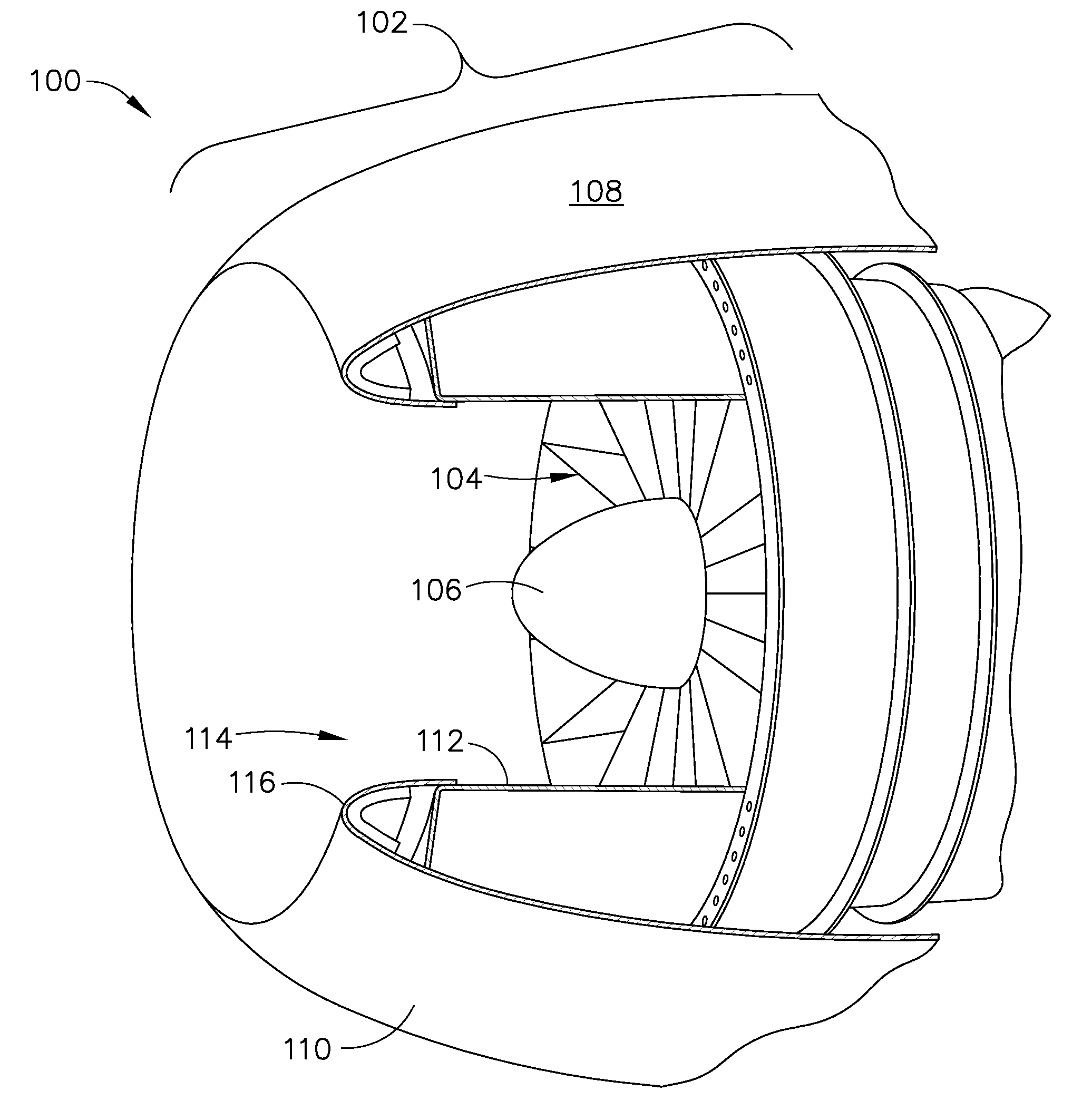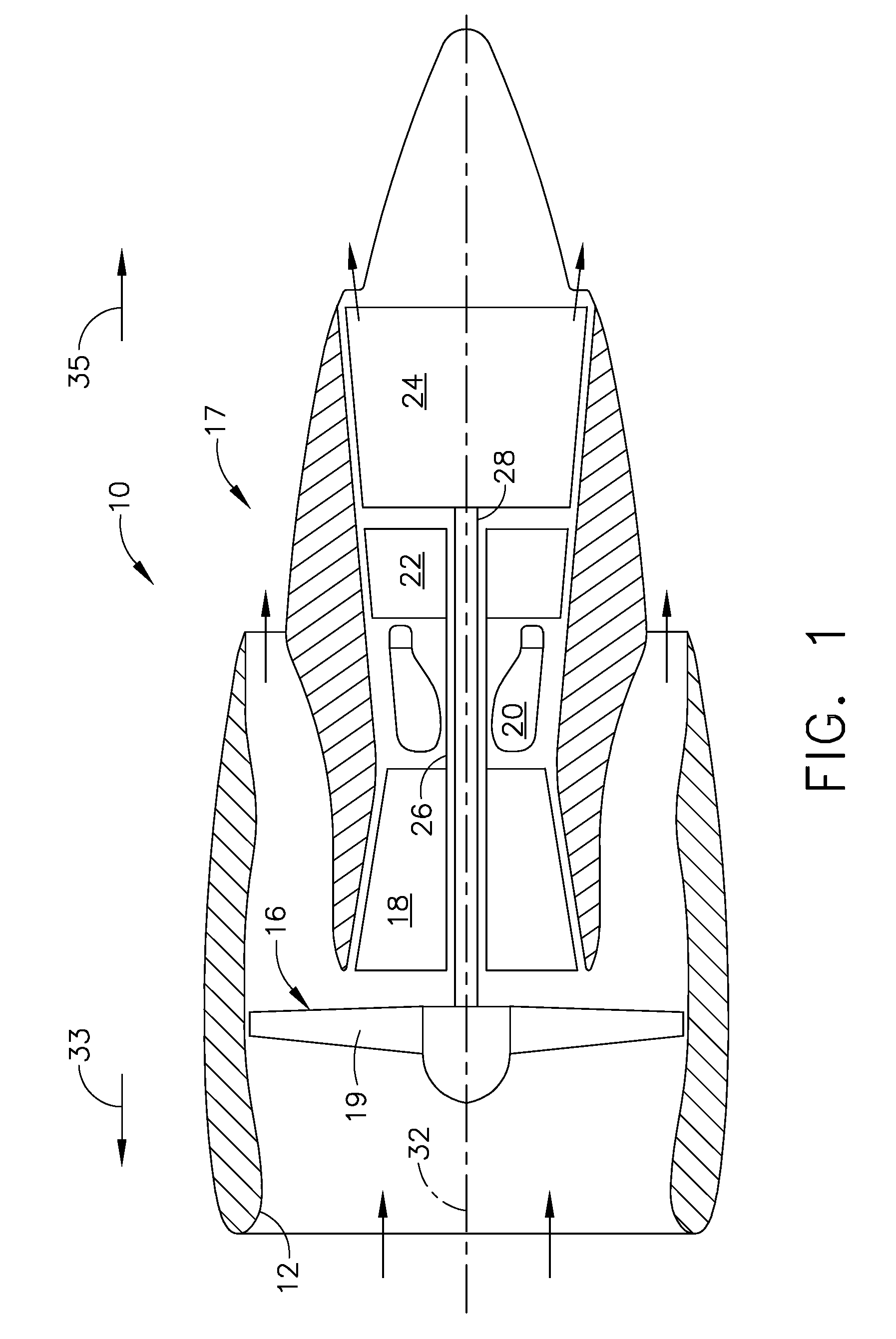Anti-icing system and method for preventing ice accumulation
a technology of anti-icing system and anti-ice accumulation, which is applied in the direction of ohmic-resistance heating, transportation and packaging, chemistry apparatus and processes, etc., can solve the problems of ice formation on airfoils and other surfaces of aircraft structures, undesirable and/or dangerous flying conditions, and significant accumulation of ice within the engine and over exposed engine structures
- Summary
- Abstract
- Description
- Claims
- Application Information
AI Technical Summary
Benefits of technology
Problems solved by technology
Method used
Image
Examples
Embodiment Construction
[0019]FIG. 1 is a cross-sectional view of a portion of turbine engine 10. In the exemplary embodiment, turbine engine 10 includes a fan assembly 16 that is rotatably coupled about a longitudinal centerline axis 32. In the exemplary embodiment, fan assembly 16 is positioned at a forward end 33 of turbine engine 10. In an alternative embodiment, fan assembly 16 is positioned at an aft end 35 of turbine engine 10. Fan assembly 16 includes a plurality of rows of fan blades 19 positioned within a nacelle assembly 12. In one embodiment, nacelle assembly 12 houses various operating components (not shown) of turbine engine 10.
[0020]In the exemplary embodiment, turbine engine 10 also includes a core engine 17 that is positioned downstream from fan assembly 16. Core engine 17 includes a compressor 18, a combustor 20, and a turbine 22 that is coupled to compressor 18 via a core rotor shaft 26.
[0021]During operation, core engine 17 generates combustion gases that are channeled downstream to a t...
PUM
| Property | Measurement | Unit |
|---|---|---|
| conductive | aaaaa | aaaaa |
| electrical voltage | aaaaa | aaaaa |
| aerodynamic | aaaaa | aaaaa |
Abstract
Description
Claims
Application Information
 Login to View More
Login to View More - R&D
- Intellectual Property
- Life Sciences
- Materials
- Tech Scout
- Unparalleled Data Quality
- Higher Quality Content
- 60% Fewer Hallucinations
Browse by: Latest US Patents, China's latest patents, Technical Efficacy Thesaurus, Application Domain, Technology Topic, Popular Technical Reports.
© 2025 PatSnap. All rights reserved.Legal|Privacy policy|Modern Slavery Act Transparency Statement|Sitemap|About US| Contact US: help@patsnap.com



